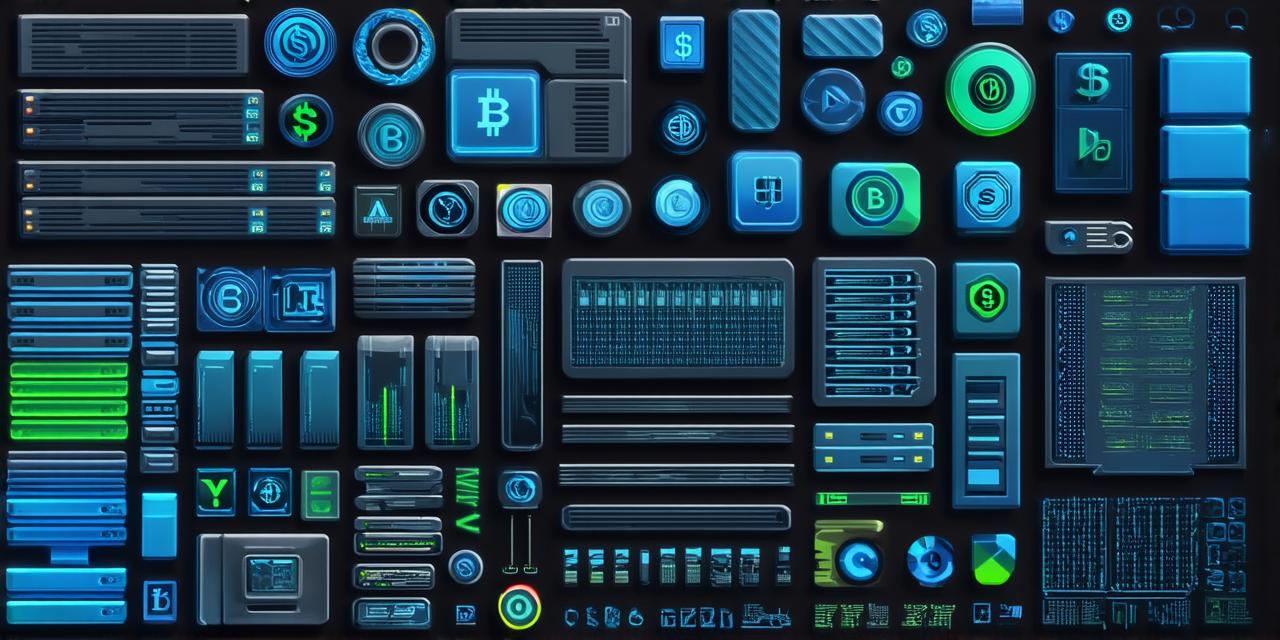
The basics of blockchain technology
Blockchain technology was first introduced in 2008 with the creation of Bitcoin, a decentralized digital currency. Since then, blockchain has expanded its applications beyond cryptocurrencies to various industries such as finance, healthcare, supply chain management, and more.
Here are some key features of blockchain technology that make it different from traditional databases:
- Decentralization: Blockchain is a distributed network that allows multiple parties to share data and trust in the system without the need for a central authority. This makes it resistant to hacking, censorship, and fraud.
- Immutability: Once data is recorded on the blockchain, it cannot be altered or deleted. This ensures that records are tamper-proof, and any changes made must be verified by consensus among network participants.
- Transparency: All transactions on the blockchain are publicly visible, providing greater transparency in business dealings and enabling better decision-making.
- Smart contracts: Blockchain technology enables the creation of smart contracts, which are self-executing agreements that automatically enforce terms of a contract when certain conditions are met.
Blockchain innovation in digital transformation
The potential applications of blockchain technology go beyond cryptocurrencies and can significantly enhance digital transformation initiatives across industries. Here are some examples:
- Finance: Blockchain technology is transforming the financial industry by enabling faster, cheaper, and more secure transactions. It is also used for identity verification, fraud detection, and compliance monitoring.
- Healthcare: Blockchain technology can improve patient data privacy and security, reduce healthcare costs, and enhance medical research. It can also enable secure sharing of medical records among healthcare providers, reducing the need for paperwork and administrative overhead.
- Supply chain management: Blockchain technology can enhance supply chain transparency, improve logistics, and reduce fraud. It can enable end-to-end tracking of products, from production to delivery, providing better visibility into the entire supply chain.
- Real estate: Blockchain technology can simplify real estate transactions, reduce costs, and enhance security. It can enable secure sharing of property records among buyers, sellers, and other stakeholders, reducing the need for intermediaries.
- Digital identity: Blockchain technology can enhance digital identity security and privacy, reducing the risk of identity theft and fraud. It can enable secure sharing of personal data among parties while maintaining control over identity information.
Blockchain innovation in action: Case studies
Here are some real-life examples of how blockchain technology is being used to drive innovation in various industries:
- Maersk: Maersk, a global shipping company, partnered with IBM and other organizations to create TradeLens, a blockchain-based platform that enables end-to-end tracking of shipments across the supply chain. The platform has enabled faster and more efficient customs clearance, reducing costs and improving customer satisfaction.
- MediLedger: MediLedger is a blockchain-based platform that enables secure sharing of prescription medication data among healthcare providers and pharmacies. The platform has reduced medication waste, improved patient safety, and enhanced regulatory compliance.
- Provenance: Provenance is a blockchain-based platform that enables secure sharing of property records among buyers, sellers, and other stakeholders. The platform has simplified real estate transactions and reduced the need for intermediaries.
- Gem: Gem is working with several hospitals to create a blockchain-based platform that allows patients to securely share their health data with doctors and other healthcare providers. The platform has enabled better care coordination and reduced administrative overhead.
Blockchain innovation challenges
While blockchain technology holds immense potential for digital transformation, there are also some challenges that need to be addressed:
- Scalability: Blockchain networks can become slow and congested as more participants join the network, leading to slower transaction processing times. This is a challenge that needs to be addressed through technological improvements and optimizations.
- Regulation: Blockchain technology is still in its early stages, and regulations around it are not yet fully developed. This creates uncertainty for businesses and individuals looking to adopt blockchain solutions.
- Interoperability: Different blockchain networks use different protocols and standards, making it challenging for data to be shared across networks. There is a need for greater interoperability and standardization to enable seamless data sharing.
- Security: While blockchain technology is generally secure, there are still vulnerabilities that need to be addressed. For example, 51% attacks can compromise the security of a network if a single entity controls more than half of the computing power.
Blockchain innovation future outlook
Despite these challenges, the future of blockchain innovation looks bright, with significant potential for digital transformation across industries. As technology continues to evolve and regulations become clearer, we can expect to see more widespread adoption of blockchain solutions in areas such as finance, healthcare, supply chain management, real estate, and more.
FAQs
Here are some frequently asked questions about blockchain technology:
- What is the difference between blockchain and traditional databases?
- What are some real-life examples of blockchain technology in action?
- What are some challenges facing blockchain technology?
- What is the future outlook for blockchain innovation?
Blockchain is a decentralized, immutable, and transparent ledger that eliminates the need for intermediaries and enhances security, efficiency, and trust. Traditional databases are centralized, mutable, and lack transparency.
Blockchain technology is being used to drive innovation in various industries such as finance, healthcare, supply chain management, and more. Some real-life examples include TradeLens, MediLedger, Provenance, and Gem.
Blockchain technology faces challenges such as scalability, regulation, interoperability, and security. These challenges need to be addressed through technological improvements and optimizations, as well as greater standardization and clarity around regulations.
The future of blockchain innovation looks bright, with significant potential for digital transformation across industries. As technology continues to evolve and regulations become clearer, we can expect to see more widespread adoption of blockchain solutions.
